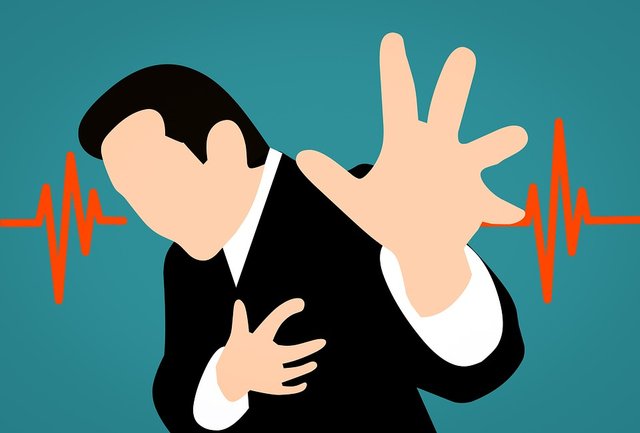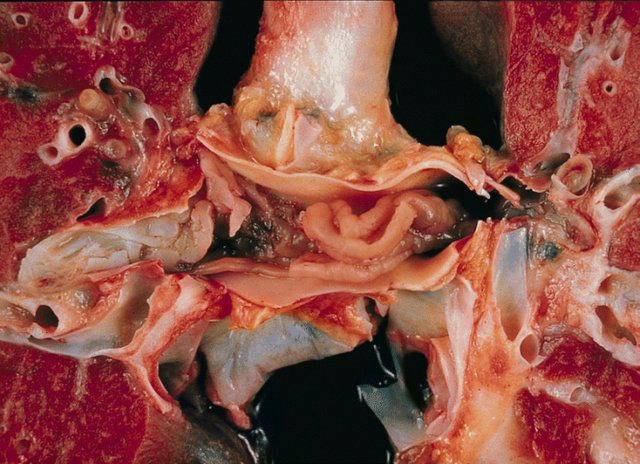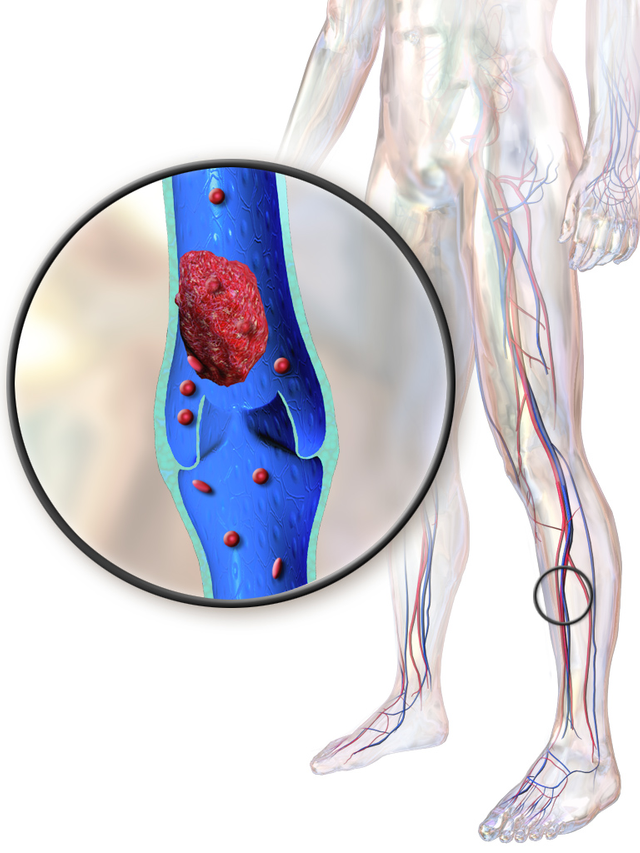IMPROVING HEALTH OF STEEMIANS #31- Pulmonary Embolism
Hello my steemit community,

In today's edition of IMPROVING HEALTH OF STEEMIANS, I want to talk to you about Pulmonary embolism.
Pulmonary embolism is the occlusion of one or more pulmonary arteries in your lungs. In most cases, it is caused by blood clots that travel to the lungs from the deep venous system of the lower extremities, however, they rarely also originate in the pelvic, renal veins, or the right heart chambers.
The word "embolism" comes from the Greek émbolos, meaning "stopper" or "plug."
Anyone can develop blood clots and subsequent pulmonary embolism but some conditions and diseases such as heart failure, stroke, smoking or taking birth control pills increase the risk of developing it. The symptoms are nonspecific and include dyspnea, chest pain, cough, and in severe cases, syncope or cardiorespiratory shock.

source
EPIDEMIOLOGY
Pulmonary embolism affects around 117 in 100 000 people every year, or about 1 in 1,000 people in the U.S., resulting in about 350,000 new cases a year, causing up to 85,000 deaths a year. PE affects mostly adults. It is present in about 60-80% of patients with deep vein thrombosis, although more than half of these patients are asymptomatic. It is the third most common cause of death in hospitalized patients. Autopsies have revealed that approximately 60% of patients dying in hospitals have PE, and the diagnosis is absent in about 70% of cases. Prospective studies have shown that 10-13% of patients who are lying in the hospital develop deep vein thrombosis.
SYMPTOMS
Pulmonary embolism symptoms can vary greatly, depending on how much of your lung is involved, the size of the clots, and whether you have underlying heart disease.
The most common symptoms are:
chest pain, a sharp pain that might become worse when breathing in
shortness of breath
a cough, normally dry but possibly with blood and mucus
fast heart rate
dizziness
You may also have fever, pain, redness and swelling in one of your legs (DVT)
CAUSES
Pulmonary embolism occurs when a clump of material, most often a blood clot, blocks the blood flowing through an artery in your lungs. These blood clots most commonly come from the deep veins of your legs. This condition is known as deep vein thrombosis (DVT).
Sometimes, blockages in the blood vessels are caused by :
- Fat, collagen or other tissue- particles of the fat or a bone marrow enters into the venous system and then into the pulmonary artery. Embolism with fat is caused by long bone fractures, orthopedic implants, microvascular occlusions or necrosis of bone marrow. Fat embolism is causes a pulmonary syndrome similar to acute respiratory distress syndrome (ARDS) with severe rapid hypoxemia, often accompanied by neurological changes and petehilic rash.
- Part of a tumor- neoplastic cells (usually in adenocarcinoma) enter systemic venous circulation and pulmonary artery system, where they , proliferate and obstruct the flow. Patients typically experience dyspnoea and pleural chest pain and they develop cor pulmonale over the course of several weeks to months.
DIAGNOSIS
Diagnosing PE is a challenge, given that the symptoms are unspecific and do not have high diagnostic accuracy. It is most important to include PE in differential diagnosis when non-specific symptoms such as dyspnea, pleural chest pain, fever, hemoptysis, and cough are present. Therefore, PE should be included in differential diagnosis in patients with conditions such as cardiac ischemia, heart failure, COPD, pneumothorax, pneumonia, sepsis, hyperventilation. PE should also be considered in elderly patients with tahopnea and changes in mental status.
Tests for diagnosing pulmonary embolism include:
electrocardiogram (EKG)- mostly shows tachycardia with various abnormalities of ST-T segments, which are again not specific to PE
chest X-ray- usually nonspecific, but may show atelectasis, focal infiltrates or pleural effusion
computerized tomography (CT) scan
d-Dimer test- D-dimer is a byproduct of intrinsic fibrinolysis, hence elevated levels of d-dimer occur in the presence of a recent thrombus. However, elevated levels are not specific to venous thrombosis because many patients without DVT and PE also have elevated levels of d-dimer
Ultrasound
Pulmonary angiogram
MRI
PREVENTION
Pulmonary embolism prevention is limited to the prevention of deep vein thrombosis. You can reduce your risk of PE by doing things that help prevent blood clots in your legs.
| DO | DON'T |
| sit comfortably in your seat and lie back as much as possible | sit for long periods without moving |
| bend and straighten legs, feet and toes every 30 minutes while seated | drink too much coffee and other caffeine-based drinks | regular exercise | drink alcohol |
| wear compression stockings | |
| Drink plenty of fluids |
TREATMENT
Pulmonary embolism is treated with anticoagulants and clot dissolvers. If there is a life-threatening clot, surgical procedures may be performed.
REFERENCES
1. Merck E., The Merck Manual of Diagnosis and Therapy, Merck Manuals, 2011.
2. Kumar P., Kumar and Clark's Clinical Medicine, Saunders ltd., 2012.
3. Holbrook AM, Periera J, Labiris R, et al: Systematic overview of warfarin and its drug and food interactions. Archives of Internal Medicine 165(10): 1095-1106, 2005.
Factual claims which are not sourced are from my own personal experience and med school.



I'm a college student, i can not not do this dont's, wait does that make sense?! double negative is confusing me xD
Nice info @doctorcro, i actually remembered you today, i'm going to buy a stethoscope, don't know if i should buy a class 2 or class 3, i've heard class 3 are better, and since it's a stethoscope i think ill have it for a couple of years so it's better to buy the class 3 right?
Haha, double negative is so confusing 😂
Yes, class 3 is better, you will have it more than a couple of years , so its a good investment :)
Yeah, more than a couple of years if no one steals it xD if i ever specialize in cardiology i might very well get an electronic one, those must be AMAZING~!!! you ever tried one?
I never tried it. When it comes to stethoscope, I'm old fashion about it. Only good old Littmann :P
But it is a Littmann, it's just that it's electronic, ea one costing around 200 bucks, they say you can hear everything with those ones, even the soul of the body JK, but ppl tell me they are great!
Its not that expensive, give that class 3 is 150 $ in Croatia
class 3 is 80 bucks in Portugal! You Croatians need to start importing stuff from us, we sure need the money xD
Great post with great tips Doctor
it's very important to share this kind of info so people will understand better their body and will have in their mean to go to Doctor office when ever they feel something is wrong
That is what I'm going for. Educate peope so they can recognize symptoms early :)
Another great post, good job Doc :)
Thank you :)
You got a 27.18% upvote from @mercurybot courtesy of @doctorcro!